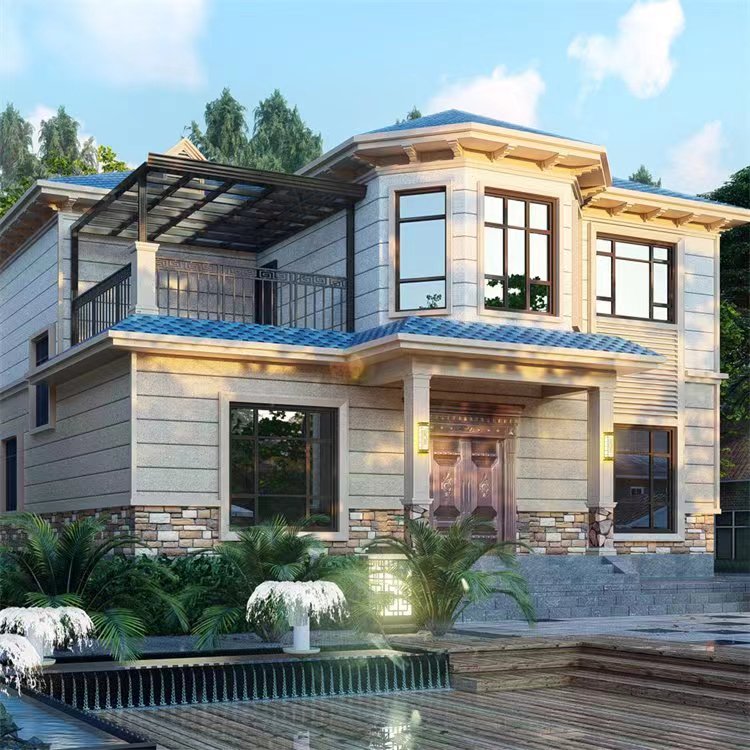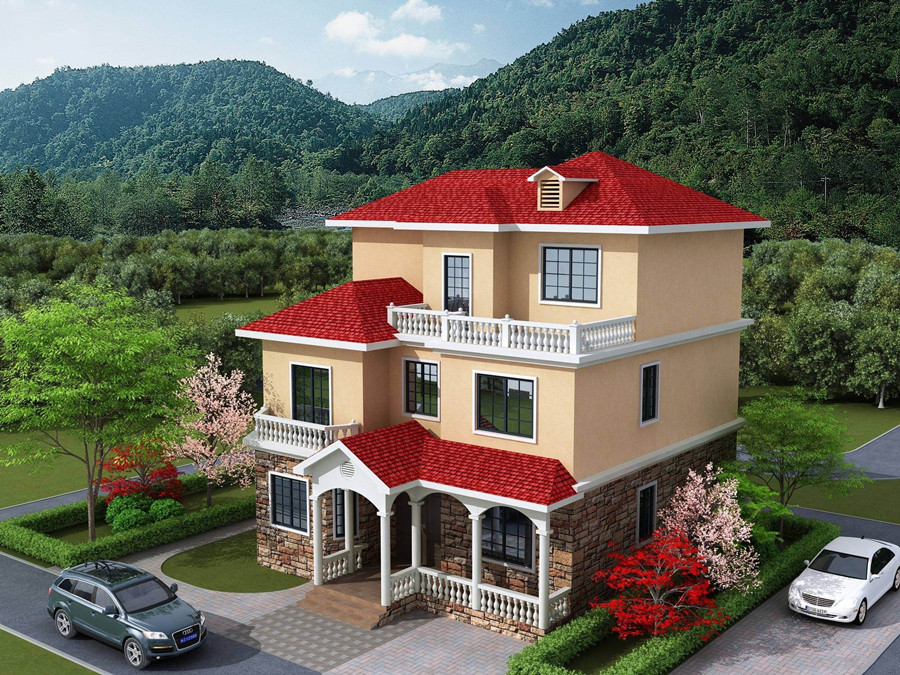Light-steel villas do require regular maintenance. The following provides a detailed introduction from aspects such as necessity, maintenance frequency, and maintenance content:

Necessity of Regular Maintenance
- Ensure Safety: Regular maintenance can promptly detect and address issues such as structural damage and loose connectors, preventing potential safety hazards and ensuring the safety of residents. For example, if loose connectors are not dealt with in time, they may affect the overall structural stability of the house.
- Prolong Service Life: The main materials of light-steel villas, such as light-steel keels, exterior wall decoration panels, and roofing materials, will age under the influence of environmental factors during long-term use. Regular maintenance can slow down the aging process of materials and extend the overall service life of the villa.
- Maintain Performance: Through regular inspections and maintenance, the villa's insulation, moisture - proof, and waterproof performance can be kept in good condition, enhancing the comfort of living. For instance, checking the integrity of the insulation layer can maintain a stable indoor temperature.
- Preserve Aesthetics: Regular cleaning and maintenance can keep the exterior of the villa clean, preventing problems such as dust accumulation, stains, and discoloration due to material aging from affecting its appearance.

Maintenance Frequency
- Daily Maintenance: During daily use, conduct simple cleaning and maintenance of the villa, such as removing standing water, checking doors and windows, and sweeping fallen leaves. This is a continuous maintenance process.
- Quarterly Inspections: Conduct a comprehensive inspection every quarter, including the steel structure, roof, walls, doors, and windows. Check for rust, cracks, damage, etc., and repair them in a timely manner.
- Annual Maintenance: Conduct a comprehensive maintenance and upkeep every year, including anti - rust treatment of the steel structure, checking the tightness of connectors, and replacing damaged parts.
- Special Circumstances: If the villa is located in an area with frequent acid rain, is frequently exposed to wind and rain, or is in a high - humidity and high - corrosion environment, more frequent maintenance may be required, such as inspections and maintenance every six months or every quarter. Additionally, villas with a longer service life also need to increase the maintenance frequency.
Maintenance Content
Structural Maintenance
- Anti - corrosion of Steel Structure: Regularly check the anti - corrosion coating of the steel structure to ensure that it is not peeling or damaged. If rust is found, sand, remove the rust, and re - paint with anti - corrosion paint.
- Inspection of Connectors: Check the tightness of bolts, rivets, and other connectors to prevent loosening or damage. Especially after long - term use, conduct regular inspections and replacements.

Appearance Maintenance
- Exterior Wall Maintenance: Check the exterior wall for cracks, peeling, or corrosion. If there are problems, repair and handle them in a timely manner. Regularly clean the exterior wall to avoid dust and pollutants from corroding the exterior wall materials. Different exterior wall materials have different maintenance methods. For example, cultural stone has a self - cleaning function and basically does not require special maintenance; ceramic tiles are easy to clean with low maintenance costs, but avoid using a high - pressure water gun to flush the joints; metal embossed insulation boards can be washed with clean water or wiped with a soft cloth or sponge dipped in an aqueous solution containing 1% - 2% neutral detergent, and should be cleaned 1 - 2 times a year.
- Roof Inspection: Check the roof for leaks, water accumulation, or damage. Remove fallen leaves, snow, and other debris that may affect the drainage system from the roof. Especially during the rainy season and winter, pay more attention to checking the roof's sealing and drainage system. Generally, the service life of asphalt roofing tiles is about 20 years. They are prone to discoloration and aging over time and need to be replaced according to the situation.
- Foundation Inspection: Although the foundation of light - steel villas is usually relatively stable, it still needs to be regularly checked for stability. Especially after experiencing extreme weather conditions or earthquakes, pay attention to checking for settlement, cracking, etc., and repair them in a timely manner.
Indoor Maintenance
- Walls and Floors: The indoor walls and floors need regular cleaning and maintenance. The walls can be cleaned with appropriate cleaning agents, and the floors should be maintained according to the material. For example, wooden or ceramic tile floors should be regularly waxed or oiled to extend their service life.
- Ventilation and Humidity Control: Controlling indoor humidity is very important. Excessive humidity may cause mold on the walls or affect the structural stability. Regularly ventilate and use dehumidifiers or air - conditioning systems to control indoor humidity and ensure air circulation and dryness.
- Electrical System Inspection: Regularly check the safety of the electrical system to ensure that the wires and electrical equipment are working properly. Regularly inspect electrical accessories such as sockets and switches to avoid short - circuits or other electrical failures. If any abnormalities are found in the electrical equipment, repair or replace them immediately.
Energy - saving and Environmental - friendly Maintenance
- Insulation Layer Inspection: Regularly check the integrity of the insulation layer to ensure that there is no damage or loosening. If problems are found, repair them to maintain good insulation effects.
- Maintenance of Energy - saving Equipment: If the villa is equipped with energy - saving equipment such as solar water heaters and energy - saving lamps, regularly maintain and clean these devices to ensure their normal operation and achieve energy - saving effects.